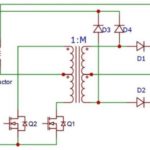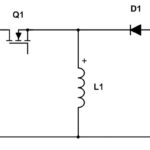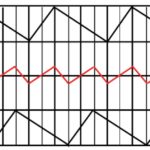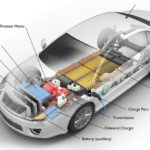 Space system designers cannot easily support non-standard voltages or add functions with traditional hybrid-style power converters. Microchip Technology Inc. has eliminated the cost, complexity, and customization challenges of these hybrid solutions by offering a discrete-component-based, space-grade dc-dc power converter family that now includes 28V-input, 50-watt (W) radiation-tolerant options.
Space system designers cannot easily support non-standard voltages or add functions with traditional hybrid-style power converters. Microchip Technology Inc. has eliminated the cost, complexity, and customization challenges of these hybrid solutions by offering a discrete-component-based, space-grade dc-dc power converter family that now includes 28V-input, 50-watt (W) radiation-tolerant options.
Microchip’s SA50-28 family is the industry’s only off-the-shelf, 28V-input, radiation-tolerant power converter offering that is based on discrete components with surface-mount construction and non-hybrid assembly processes. Delivering more capabilities than alternative off-the-shelf, space-grade power converters, a single SA50-28 device with customized parameters eliminates the volume, weight, and complexity problems of using hybrid solutions with their multiple devices and surrounding circuitry.
Microchip’s comprehensive SA50-28 product line is a 20V- to 40V-input, 50W family with nine standard outputs of 3.3V, 5V, 12V, 15V and 28V in single- and triple-output configurations. The devices can be tailored to a system’s exacting power needs in a relatively short time with minimal additional costs as compared to hybrid-style power converter products. Other features include high efficiency, low output noise, output inhibit control, overcurrent protection, external synchronization and full-rated power operation through −55°C to +85°C with linear derating to +125°C.
The SA50-28 family is part of Microchip’s growing line of standard non-hybrid, space-grade power converters that enable designers to use commercially available, off-the-shelf components whose circuitry has a proven spaceflight heritage. The products join the radiation-hardened SA50-
120 power converter family, introduced in February 2021, that reduces risk and development time for qualified space systems by allowing designers to start with proven commercially available off the shelf technology in ceramic or plastic packages and quickly scaling up development using lower screening levels than traditional Qualified Manufacturers List (QML) requirements.
Microchip’s radiation-tolerant SA50-28 family is available for volume production and limited sampling. Prototype-grade units are available from stock, and non-radiation-tolerant engineering units are also available with the same performance as the space-grade units at a lower cost. Delivery times are usually faster than hybrid-construction units with no associated lot penalty. The devices are complemented by Microchip’s family of FPGAs, high-reliability radiation-hardened power semiconductors, and space-grade timing devices.







Leave a Reply